What is Body Checking?
Body checking is a maladaptive coping strategy used to manage anxiety in those who are fearful of weight or shape change. These behaviours are done to reassure the person that what they are fearful of is in fact not happening. These behaviours can reduce anxiety however, are not a positive coping skill.
Watch the Video!
Body Checkin Examples
- Weighing: Body weighing is usually one of the first behaviours to come to mind. It involves using a scale to check one’s body weight repeatedly. It could be weekly, daily or even multiple times a day.
- Measuring: Measuring involves using a tape measure to measure certain dimensions of the body. This technique is usually done around the waist, hips and bust to ensure they remain the same size, down to the inch.
- Wrapping: Wrapping involves using one’s own hands to measure certain body parts. This technique is often used to measure wrist or thigh circumference.
- Tracing: Tracing involves running fingers along certain body parts to ensure their prominence. Tracing is mostly commonly done to one’s collar bones and can be performed quite subconsciously.
- Pinching: Pinching looks like grabbing abdominal fat or arm fat, measuring areas of the body by how much one can hold between their fingers.
- Mirrors and Photos: Mirrors and body photos can be used to visually scrutinize one’s body shape or weight. These may also be used to examine how one’s clothes fit their body.
Why is Body Checking Harmful?
As mentioned above, it is possible that body checking can reduce your child’s anxiety around body shape and weight changes. However, studies actually show that those who engage more frequently in these behaviours have lower body satisfaction.
Body checking behaviours are the result of somebody having an imagined flaw with their body. The more this flaw is checked and scrutinized, the easier it is for the flaw to appear worse and worse every time. This can lead to body image distortion. Body image distortion is when someone sees their physical body to be significantly different than it actually is in reality.
Therefore, the best case scenario with body checking is that the person believes the perceived problem area hasn’t changed, but more often than not, it is perceived to be worse. This actually increases the person’s anxiety around their body. Unfortunately, this can cause a negative feedback cycle where the person performs body checking behaviours which increases their anxiety. This anxiety then needs to be managed and their maladaptive coping mechanism for this anxiety is body checking. This can also perpetuate any disordered eating behaviours present as the person tries to control for their perceived weight or shape change.

These behaviours are often much less discussed in eating disorder recovery yet are extremely important to combat. If your child exhibits these behaviours, they will likely not be challenged until after the refeeding process is complete. It is also important to note that learning to interrupt these behaviours and being successful in that will take time and that is okay!
How Can You Help Your Child Combat Body Checking
Step 1
Start by asking your child to record how many times they perform body checking over a full 24-hour period. This step has no focus on interrupting the behaviours, just recording their occurrences free of judgment. This can be done on a phone notes app or pen and paper – jotted down anywhere so we have some data collected! It may be the case that body checking behaviours are happening so often that it’s near impossible to record them all. If this is the case, then we want your child to be mindful of how often body checking is occurring.
Step 2
The next day, have them record the occurrence of body checking behaviours again, but this time encourage your child to focus on interrupting their behaviours. We encourage you and your child to do whatever you think would be helpful in trying to reduce the frequency of body checking. Some questions that may be helpful to ask your child are have them reflect on are:
- What are you looking for?
- Is this helpful?
- Has anything changed since the last time you body checked?
At the end of these two days, you should have data on how many times body checking occurs in a day and when your child is and is not attempting to interrupt these behaviours.
Next Steps
Practice using distress tolerance skills or alternate coping mechanisms to help interrupt these behaviours. These will help target the underlying anxiety in order to help your child better cope with this anxiety without relying on maladaptive body checking mechanisms.
Body checking behaviours can be difficult to overcome but are absolutely possible. If you want to learn more about how we can support you and your child, you can book a free 15-minute consultation call with us.
*Reserved for Canadian residents

